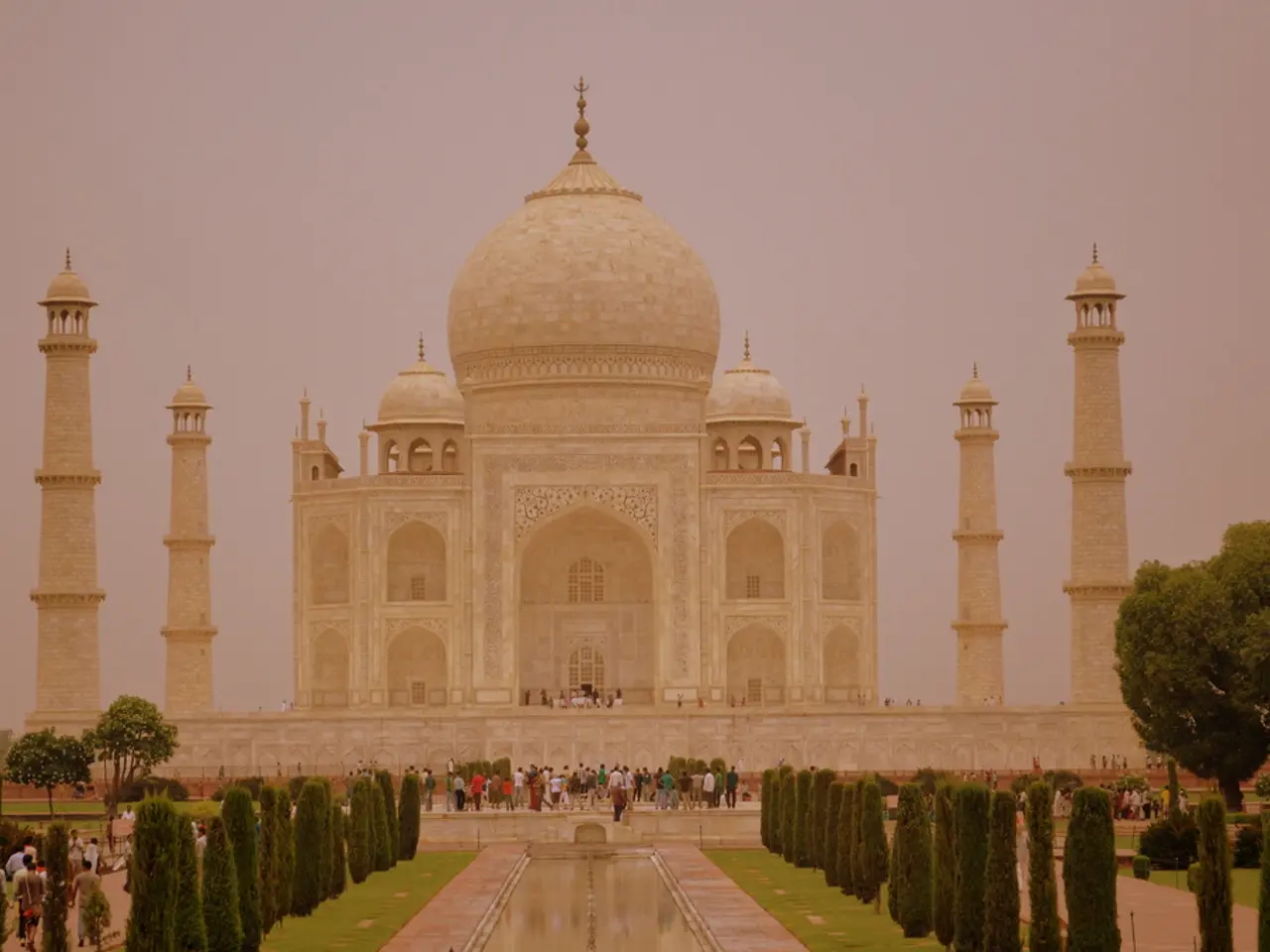Struggle for India's freedom: An enduring tale of valor and selflessness
India's Long Struggle for Independence: A Century of Resilience and Unity
India's journey towards independence was a century-long struggle against British colonial rule, marked by key events, prominent leaders, and significant societal impacts. The movement, which began in the mid-18th century with the Battle of Plassey, culminated in 1947 when India finally gained its freedom.
The Battle of Plassey (1757)
The British East India Company's dominance in India began with the Battle of Plassey. This victory set the stage for the company's control over Indian territories.
The Revolt of 1857 and the First War of Indian Independence
The Revolt of 1857, also known as the First War of Indian Independence, was a widespread but ultimately unsuccessful uprising against British rule. It was led by figures like Rani Lakshmibai of Jhansi, Bahadur Shah Zafar, Tantia Tope, and Mangal Pandey. The revolt led to direct British Crown rule in 1858.
The Indian National Congress (1885)
The Indian National Congress (INC), the first major nationalist political party in India, was formed in 1885 as a platform for dialogue between educated Indians and British rulers.
The Swadeshi Movement (1905)
The partition of Bengal by the British led to the Swadeshi Movement, promoting boycott of British goods.
Key Moments and Movements
- The Jallianwala Bagh Massacre in 1919, where British troops killed hundreds of unarmed civilians, galvanized the independence effort.
- Mahatma Gandhi led nonviolent civil disobedience campaigns like the Non-Cooperation Movement (1920-22), the Salt March (1930), and the Quit India Movement (1942).
- Subhas Chandra Bose, a charismatic and radical nationalist, formed the Azad Hind Fauj (Indian National Army) to fight the British with the help of Axis powers during World War II.
- Revolutionary groups like Anushilan Samiti and Jugantar carried out armed resistance in Bengal.
- Bhagat Singh's execution at age 23 turned him into a martyr whose legacy still inspires generations.
- Sardar Vallabhbhai Patel was instrumental in integrating over 560 princely states into the Indian Union after independence.
- Mohandas Karamchand Gandhi, later known as Mahatma Gandhi, introduced 'satyagraha' (truth-force) and 'ahimsa' (non-violence) as the moral compass of India's struggle.
The Road to Independence
As World War II ended, Britain's economic and military resources were depleted, leading to internal pressure from mass movements, naval mutinies of 1946, and growing global anti-colonial sentiment, which forced Britain to negotiate independence.
The Legacy of India's Independence
The Indian Independence Movement fostered social awareness, fought untouchability, and promoted unity across religious and caste lines. It also led to the end of colonial rule, the creation of Pakistan, and the displacement of over 14 million people due to the Partition.
The movement's democratic institutions laid the groundwork for India's Constitution and democratic governance post-independence. Its success in nonviolent resistance also inspired civil rights movements worldwide.
The Contributions of Key Leaders
- Mahatma Gandhi led nonviolent civil disobedience campaigns and introduced 'satyagraha' and 'ahimsa' as the moral compass of India's struggle.
- Jawaharlal Nehru, the first Prime Minister of independent India, advocated for Purna Swaraj (complete independence) at the 1929 Lahore Session of INC.
- Subhas Chandra Bose sought armed resistance against the British.
- B. R. Ambedkar worked for social reforms and the rights of untouchables, and played a key role in framing the Indian Constitution.
- Other leaders included Bal Gangadhar Tilak, Annie Besant, and members of the All-India Muslim League.
As the chief architect of the Indian Constitution, Ambedkar shaped a legal framework that safeguarded civil liberties for all citizens.
Women in the Independence Struggle
Women played a profound role in the independence struggle, often under-recognized in mainstream narratives. Figures like Sarojini Naidu, Annie Besant, Aruna Asaf Ali, Kasturba Gandhi, and Usha Mehta took part in protests, underground radio broadcasts, and political mobilization. Bhagat Singh, Rajgur, and Sukhdev became icons of youthful defiance in Punjab.
The Grand Old Man of India and the Tireless Reformer
Dadabhai Naoroji, known as the 'Grand Old Man of India', advocated constitutional reforms and exposed the economic drain of colonial rule. Dr. B.R. Ambedkar, a jurist and social reformer, was a tireless advocate for the rights of Dalits and marginalized communities.
Bal Gangadhar Tilak, the Proponent of Complete Independence
Bal Gangadhar Tilak, one of the early proponents of complete independence, famously declared, "Swaraj is my birthright, and I shall have it!"
The Last Viceroy and the Transfer of Power
Lord Mountbatten, the last Viceroy, announced that power would be transferred by 15 August 1947, paving the way for India's independence.
India's Future: A Legacy of Unity, Secularism, and Development
Today, as India continues its journey as the world's largest democracy, the values and voices of its freedom fighters serve as a compass for future generations. The struggle for independence has left India with a legacy of unity, secularism, and development, guiding its path towards a prosperous future.
The Indian National Congress, established in 1885, was a major player in the political landscape of the struggle for India's independence.
Politics and general news in the late 19th and early 20th centuries were dominated by key moments and movements, such as the Swadeshi Movement in 1905, nonviolent civil disobedience campaigns led by Mahatma Gandhi, and the Partition of India in 1947, which had far-reaching political, social, and economic consequences.







